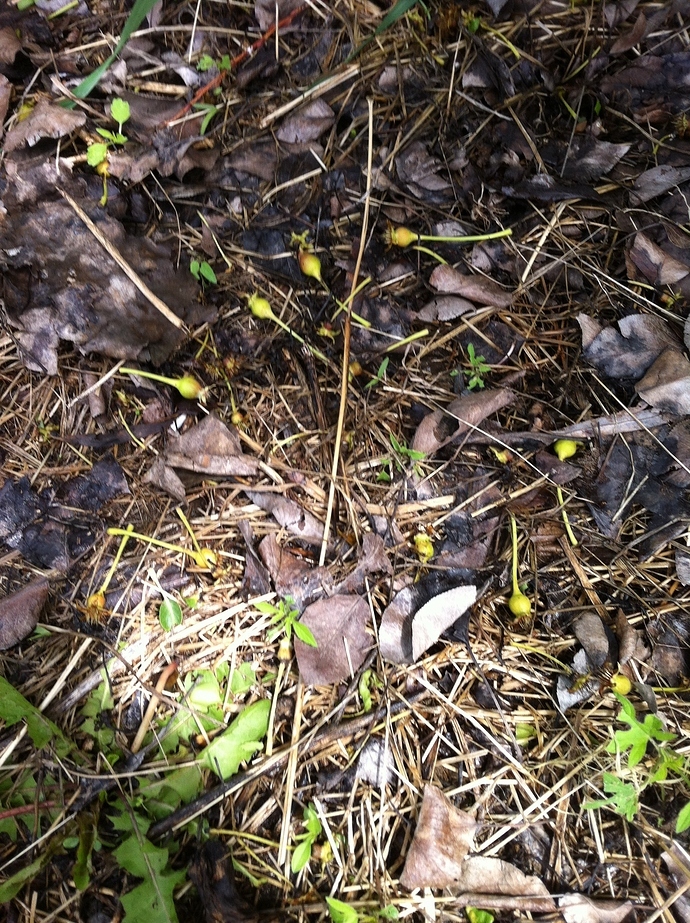How do I find out which pears are Parthenocarpic? I would like to grow more self pollinating pears so I don’t need to track bloom time and try and match pollinators for them.
“In botany and horticulture, parthenocarpy (literally meaning virgin fruit) is the natural or artificially induced production of fruit without fertilization of ovules. The fruit is therefore seedless. Stenospermocarpy may also produce apparently seedless fruit, but the seeds are actually aborted while still small.” From Wikipedia
Great new words in my vocabulary. Thanks!
I believe Shinseiki is.
European Pears
Ayers
Bartlett
California
Comice
Flordahome (limited)
Keiffer
Max Red Bartlett
Monterray
Orient (limited)
Pineapple (limited)
Seckel
Sensation Red Bartlett
Southern Bartlett
Southern King
Sugar
Surecrop
Warren
limited = sets a heavier crop if pollenizer is around
Many of the above are self fertile in the arid western states, but not other areas.
Asian Pears
20th Century
Hosui
Kikusui
Late Korean (Okusankichi)
Seigyoku
Shinseiki
Tennosui (hybrid)
Thank you that’s exactly what I was after. I know what you mean about the west. The parthenocarpic trait for a reason not well understood is greater in western and southern states than in northern states. The same variety that is parthenocarpic in California may not produce fruit in Iowa. Since I’m growing these in Kansas I will need to do my own research on the list you supplied me. There are many studies that reference individual small groups of trees but virtually no documentation is available. Here is a website that discusses pear pollination and ripening times that is very useful http://www.raintreenursery.com/Pollination_European_Pears.html.
Here are several studies that discuss parthenocarpic varieties and pollination
http://www.ishs.org/ishs-article/909_47
http://www.plantsciences.ucdavis.edu/PlantSciences_Faculty/crisosto/pdfpub/004-%2088%20Pear%20Putrescine%20Influences%20Ovule%20Senescence,%20fertilization%20time%20and%20fruit%20set.pdf
http://ir.library.oregonstate.edu/xmlui/bitstream/handle/1957/13856/ec986.pdf?sequence=1
http://www.ars.usda.gov/SP2UserFiles/Place/20721500/reprints/IBPGR.1983.Pear%20Descriptors.pdf
http://extension.colostate.edu/topic-areas/yard-garden/pollination-of-tree-fruits-7-002/
http://ucanr.edu/sites/MarinMG/?story=752
http://ucce.ucdavis.edu/files/datastore/391-461.pdf
It may not be completely understood but I think the regional quality of it is pretty straightforward. If a pear tree has adequate energy reserves it is less likely to drop unseeded fruit, so it most likely has a lot to do with the relative warmth and amount of sunlight during spring. Some regions can almost count on benign conditions, such as CA. In the midwest and the northeast weather is more variable as is parthenocarpic cropping.
Pollination problems for me wind up being lack of insect activity in most cases rather than adequate pollination partners for pears. Pears bloom sometimes when it’s to cold for insects to fly. When that happens I get some drops from the ones that didn’t get pollinated. Hopefully next year will be better for pollination. The harvest was good this year but I did have some losses due to the lack of pollination. 